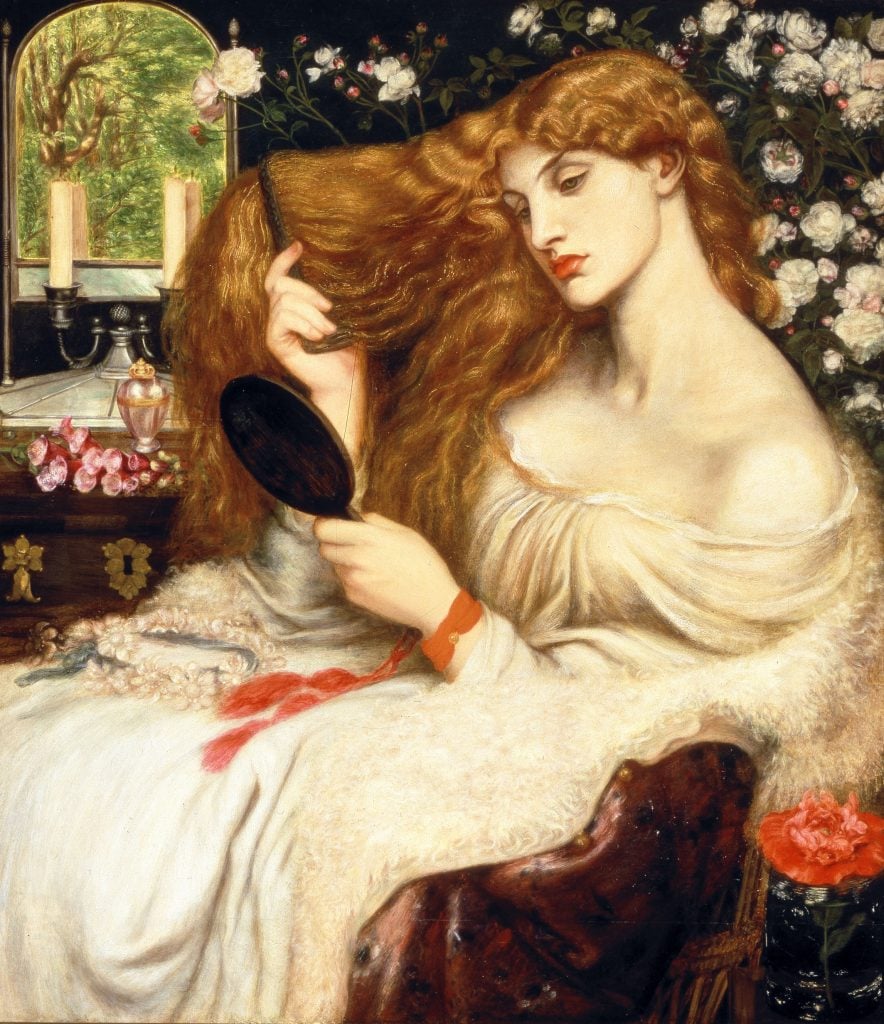Art
What are NFTs? Behind the crypto trend revolutionizing the art world – Toronto Star
The cherub looks like it’s ready to strike. Hovering idly in outer space, it points a hooked spear at the earth below and steadies its hand.
Grimes, the Canadian musician and visual artist, posted this unsettling image to an art auctioning site earlier in February. It’s part of a broader collection of digital artwork, called “WarNymphs,” that she codesigned with her brother.
Within hours of posting it online, hundreds of copies of the supersized demon baby had sold for $7,500 (U.S.) each. Total sales from her collection reached closer to $6 million.
At first, the frenzy may seem confounding. The image exists solely online. It’s not a physical painting or a photo. Those who bought it could easily have taken a screen grab and made it their desktop background for free.
Why spend all that money on a digital picture?
In short, the answer lies in a newly popular acronym: NFT.
Otherwise known as nonfungible tokens, NFTs are unique computer codes used to identify the authenticity of a digital item — often an image, animation or a video. The code is attached to the item to verify its originality, indicating which item is the original and which is a duplicate.
Items containing NFTs are bought and sold using blockchain, an online technology that records monetary transactions made in cryptocurrency.
To make this easier on the brain, think of “non-fungible” in terms of physical objects. A postcard of Vincent van Gogh’s “Starry Night,” for example, is fungible: swap it for another identical postcard and you have the exact same thing. The original “Starry Night,” however, is non-fungible: swap it for a replica and you no longer have the original.
The NFT distinguishes the real from the fake. How value is assigned to the original items is just as subjective as any other form of art.
“If you visit my living room, you’ll see original-sized pictures of Monet paintings. They’re really nice, and really fancy, but they’re clearly not actual Monet paintings,” explains Andreas Park, an associate professor of finance at the University of Toronto who researches cryptocurrency.
“If I could have the original, I’d be thrilled.”
In effect, the NFT has introduced the concept of originality to the online world.
For artists whose work exists solely in the digital world, it’s an opportunity to attach a monetary value to their work. For buyers, it’s an opportunity to support artists they like, and hold artwork as assets — hoping the value of the artwork goes up so it can be sold for a profit.
The trend has also benefited from the internet’s typical eccentricity. A clip of LeBron James dunking a basketball sold for $99,999. Pink socks sold for $60,000. An image of beans, scooped in a ladle, sold for $469. The proud new owners of these items can brag about holding the originals.
It’s also being taken seriously by companies hoping to get in on the trend. Christie’s, the famed British auction house, recently became the first major auctioneer to sell a digital, NFT-based artwork. The featured artist, a popular digital designer known as Beeple, made $3.5 million in a single weekend from Christie’s sales.
More recently, Kings of Leon announced their new album will be released as an NFT in partnership with a tech startup called Yellowheart.
Nike, meanwhile, holds a patent for “blockchain-based NFT-sneakers,” called Cryptokicks (a sentence that, as confusing as it is now, would be completely indecipherable to anyone 10 years ago).
In the art world, the rise of NFTs and crypto art has sprouted a wide array of new platforms and online marketplaces where people can buy and sell art as they please.
Grimes’ latest collection premiered on a website called Nifty Gateway, owned by serial entrepreneurs Tyler and Cameron Winklevoss (of “The Social Network” fame), which functions as an online marketplace where users can sell they art they’ve bought at a higher price. Not sure if they’re selling the original image? Check for an NFT.
Loading…
Loading…Loading…Loading…Loading…Loading…
Park, who’s followed the rise of blockchain and NFTs for the past several years, says the token is here to stay, though some of the recent excitement is likely temporary.
“Right now, there’s a sense of novelty that’s driving the appeal for NFT artwork. It’s like Beanie Babies: they were popular for a while, because people liked them, and then it died out,” he said.
“But, more broadly, this is a very useful record-keeping technology. It’s easy to imagine NFTs being used as proof of ownership for a variety of things in the future.”
Art
Art Bites: Millais's Muse Fell Ill After Posing for 'Ophelia' – artnet News
What’s the deal with Leonardo’s harpsichord-viola? Why were Impressionists obsessed with the color purple? Art Bites brings you a surprising fact, lesser-known anecdote, or curious event from art history. These delightful nuggets shed light on the lives of famed artists and decode their practices, while adding new layers of intrigue to celebrated masterpieces.
Beauty is pain. Elizabeth Siddal, one of art history’s most famous muses, had intimate experience with this adage. Siddal first met artist Walter Deverell in 1849, the year she turned 20, while working for a London milliner and soon became a favored model of the Pre-Raphaelite Brotherhood artists. She was featured in William Holman Hunt’s A Converted British Family Sheltering a Christian Missionary from the Persecution of the Druids (1849–50) and most famously in John Everett Millais’s Ophelia (1851–52). It was during her contribution to the latter painting, that she fell ill.
Beauty was a matter of pain for Millais, too. In a rare move for artists of the era, he spent five months painting scenery for Ophelia in a hut along Surrey’s Hogsmill River. “My martyrdom is more trying than any I have hitherto experienced,” Millais remarked, describing “muscular” flies and powerful winds. “The painting of a picture under such circumstances would be a greater punishment to a murderer than hanging.”
The Tate notes that Millais devoted only four months to portraying Ophelia herself. Siddal agreed to stand in for the doomed beauty. She spent long hours in a bathtub at the artist’s Gower Street studio, wearing a cheap gown Millais acquired. “Today I have purchased a really splendid lady’s ancient dress—all flowered over in silver embroidery,” he wrote. “It cost me, old and dirty as it is, four pounds.” The dress is still in the Tate.
Millais arranged oil lamps beneath Siddall’s tub to keep her bathwater warm. One of those lamps went out. Millais didn’t notice, and Siddal didn’t complain—by then she knew that beauty means pain. The water grew so frigid that Siddall fell ill with pneumonia. Siddall’s father ordered Millais to cover her extensive medical bills. The artist allegedly made off paying the least possible amount.


Siddal in Dante Gabriel Rossetti’s Lady Lilith (1866–68; 1872–73). Collection of the Delaware Art Museum.
Siddal made a full recovery from her Ophelia-induced illness, but the bout proved foreshadowing. Siddall likely met Pre-Raphaelite Brotherhood painter Dante Gabriel Rossetti while they both sat for Deverell’s massive oil painting Twelfth Night, Act II, Scene IV (1850). Siddall fell for Rossetti, who made her his sole model. In 1853, Rossetti took Siddall on as an art student. He taught her to draw, and advised her to drop the last letter from her surname. By 1857, Siddal became one of the only women to exhibit alongside the Pre-Raphaelites. Over the next 15 years, she produced numerous drawings, paintings, and poems, often inspired by Lord Tennyson, her favorite poet since discovering his verses on a butter wrapping as a kid.
As time wore on, Siddal grew fearful that her philandering beau would abandon her for a younger muse. While Rossetti resisted their marriage due to Siddal’s working class background, the two wed in 1860. It wasn’t enough to stave off her consumptive melancholy. Siddal died from a laudanum overdose, a rumored suicide, in 1862—decades before 1894, when Ophelia was included the original Henry Tate gift. It’s one of the museum’s most popular paintings today, due in no small part to Siddal’s sublime beauty, the pain it brought her.
Follow Artnet News on Facebook:
Want to stay ahead of the art world? Subscribe to our newsletter to get the breaking news, eye-opening interviews, and incisive critical takes that drive the conversation forward.
Art
Striking Art Gallery of Ontario workers reach tentative deal with museum – Toronto Star


/* OOVVUU Targeting */
const path = ‘/news/canada’;
const siteName = ‘thestar.com’;
let domain = ‘thestar.com’;
if (siteName === ‘thestar.com’)
domain = ‘thestar.com’;
else if (siteName === ‘niagarafallsreview.ca’)
domain = ‘niagara_falls_review’;
else if (siteName === ‘stcatharinesstandard.ca’)
domain = ‘st_catharines_standard’;
else if (siteName === ‘thepeterboroughexaminer.com’)
domain = ‘the_peterborough_examiner’;
else if (siteName === ‘therecord.com’)
domain = ‘the_record’;
else if (siteName === ‘thespec.com’)
domain = ‘the_spec’;
else if (siteName === ‘wellandtribune.ca’)
domain = ‘welland_tribune’;
else if (siteName === ‘bramptonguardian.com’)
domain = ‘brampton_guardian’;
else if (siteName === ‘caledonenterprise.com’)
domain = ‘caledon_enterprise’;
else if (siteName === ‘cambridgetimes.ca’)
domain = ‘cambridge_times’;
else if (siteName === ‘durhamregion.com’)
domain = ‘durham_region’;
else if (siteName === ‘guelphmercury.com’)
domain = ‘guelph_mercury’;
else if (siteName === ‘insidehalton.com’)
domain = ‘inside_halton’;
else if (siteName === ‘insideottawavalley.com’)
domain = ‘inside_ottawa_valley’;
else if (siteName === ‘mississauga.com’)
domain = ‘mississauga’;
else if (siteName === ‘muskokaregion.com’)
domain = ‘muskoka_region’;
else if (siteName === ‘newhamburgindependent.ca’)
domain = ‘new_hamburg_independent’;
else if (siteName === ‘niagarathisweek.com’)
domain = ‘niagara_this_week’;
else if (siteName === ‘northbaynipissing.com’)
domain = ‘north_bay_nipissing’;
else if (siteName === ‘northumberlandnews.com’)
domain = ‘northumberland_news’;
else if (siteName === ‘orangeville.com’)
domain = ‘orangeville’;
else if (siteName === ‘ourwindsor.ca’)
domain = ‘our_windsor’;
else if (siteName === ‘parrysound.com’)
domain = ‘parrysound’;
else if (siteName === ‘simcoe.com’)
domain = ‘simcoe’;
else if (siteName === ‘theifp.ca’)
domain = ‘the_ifp’;
else if (siteName === ‘waterloochronicle.ca’)
domain = ‘waterloo_chronicle’;
else if (siteName === ‘yorkregion.com’)
domain = ‘york_region’;
let sectionTag = ”;
try
if (domain === ‘thestar.com’ && path.indexOf(‘wires/’) = 0)
sectionTag = ‘/business’;
else if (path.indexOf(‘/autos’) >= 0)
sectionTag = ‘/autos’;
else if (path.indexOf(‘/entertainment’) >= 0)
sectionTag = ‘/entertainment’;
else if (path.indexOf(‘/life’) >= 0)
sectionTag = ‘/life’;
else if (path.indexOf(‘/news’) >= 0)
sectionTag = ‘/news’;
else if (path.indexOf(‘/politics’) >= 0)
sectionTag = ‘/politics’;
else if (path.indexOf(‘/sports’) >= 0)
sectionTag = ‘/sports’;
else if (path.indexOf(‘/opinion’) >= 0)
sectionTag = ‘/opinion’;
} catch (ex)
const descriptionUrl = ‘window.location.href’;
const vid = ‘mediainfo.reference_id’;
const cmsId = ‘2665777’;
let url = `https://pubads.g.doubleclick.net/gampad/ads?iu=/58580620/$domain/video/oovvuu$sectionTag&description_url=$descriptionUrl&vid=$vid&cmsid=$cmsId&tfcd=0&npa=0&sz=640×480&ad_rule=0&gdfp_req=1&output=vast&unviewed_position_start=1&env=vp&impl=s&correlator=`;
url = url.split(‘ ‘).join(”);
window.oovvuuReplacementAdServerURL = url;
TORONTO – The union representing hundreds of striking Art Gallery of Ontario workers says it’s reached a tentative deal with the museum.
The Ontario Public Service Employees Union says they reached the deal late last night, after 16 hours of bargaining.
function buildUserSwitchAccountsForm()
var form = document.getElementById(‘user-local-logout-form-switch-accounts’);
if (form) return;
// build form with javascript since having a form element here breaks the payment modal.
var switchForm = document.createElement(‘form’);
switchForm.setAttribute(‘id’,’user-local-logout-form-switch-accounts’);
switchForm.setAttribute(‘method’,’post’);
switchForm.setAttribute(‘action’,’https://www.thestar.com/tncms/auth/logout/?return=https://www.thestar.com/users/login/?referer_url=https%3A%2F%2Fwww.thestar.com%2Fnews%2Fcanada%2Fstriking-art-gallery-of-ontario-workers-reach-tentative-deal-with-museum%2Farticle_f93dfb4a-141d-5144-bb61-41d842fc7153.html’);
switchForm.setAttribute(‘style’,’display:none;’);
var refUrl = document.createElement(‘input’); //input element, text
refUrl.setAttribute(‘type’,’hidden’);
refUrl.setAttribute(‘name’,’referer_url’);
refUrl.setAttribute(‘value’,’https://www.thestar.com/news/canada/striking-art-gallery-of-ontario-workers-reach-tentative-deal-with-museum/article_f93dfb4a-141d-5144-bb61-41d842fc7153.html’);
var submit = document.createElement(‘input’);
submit.setAttribute(‘type’,’submit’);
submit.setAttribute(‘name’,’logout’);
submit.setAttribute(‘value’,’Logout’);
switchForm.appendChild(refUrl);
switchForm.appendChild(submit);
document.getElementsByTagName(‘body’)[0].appendChild(switchForm);
function handleUserSwitchAccounts()
window.sessionStorage.removeItem(‘bd-viafoura-oidc’); // clear viafoura JWT token
// logout user before sending them to login page via return url
document.getElementById(‘user-local-logout-form-switch-accounts’).submit();
return false;
buildUserSwitchAccountsForm();
console.log(‘=====> bRemoveLastParagraph: ‘,0);
Art
Striking Art Gallery of Ontario workers reach tentative deal with museum – The Globe and Mail


The union representing hundreds of striking Art Gallery of Ontario workers says it’s reached a tentative deal with the museum.
The Ontario Public Service Employees Union says they reached the deal late last night, after 16 hours of bargaining.
The downtown Toronto museum has been closed for a month while more than 400 workers represented by OPSEU – including assistant curators, archivists and food and hospitality staff – were on strike.
They walked off the job after rejecting an offer from the AGO, which the union said failed to address key issues such as wage increases, protections for part-time workers and contracting out positions.
The union didn’t share details about their new tentative deal, which will soon go to a vote among the members, and the AGO did not immediately respond to a request for comment.
No information was immediately available about when the AGO would reopen.
The union has previously said that part-time employees make up more than 60 per cent of the AGO’s work force, and they earn an average of $34,380 per year.
-
Media19 hours ago
B.C. online harms bill on hold after deal with social media firms
-
Media24 hours ago
Trump poised to clinch US$1.3-billion social media company stock award
-
Real eState20 hours ago
Montreal tenant forced to pay his landlord’s taxes offers advice to other renters
-



 Investment20 hours ago
Investment20 hours agoMOF: Govt to establish high-level facilitation platform to oversee potential, approved strategic investments
-



 Politics19 hours ago
Politics19 hours agoPolitics Briefing: Younger demographics not swayed by federal budget benefits targeted at them, poll indicates
-
News19 hours ago
Just bought a used car? There’s a chance it’s stolen, as thieves exploit weakness in vehicle registrations
-



 Science19 hours ago
Science19 hours agoGiant prehistoric salmon had tusk-like spikes used for defence, building nests: study
-



 Tech18 hours ago
Tech18 hours agoCalgary woman who neglected elderly father spared jail term






